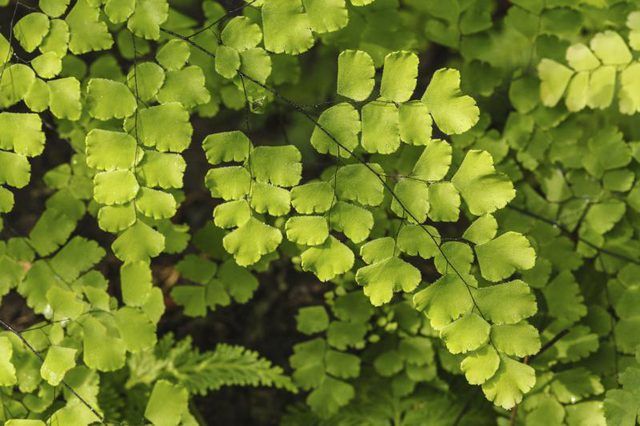Bulbs
Flower Basics
Flower Beds & Specialty Gardens
Flower Garden
Garden Furniture
Garden Gnomes
Garden Seeds
Garden Sheds
Garden Statues
Garden Tools & Supplies
Gardening Basics
Green & Organic
Groundcovers & Vines
Growing Annuals
Growing Basil
Growing Beans
Growing Berries
Growing Blueberries
Growing Cactus
Growing Corn
Growing Cotton
Growing Edibles
Growing Flowers
Growing Garlic
Growing Grapes
Growing Grass
Growing Herbs
Growing Jasmine
Growing Mint
Growing Mushrooms
Orchids
Growing Peanuts
Growing Perennials
Growing Plants
Growing Rosemary
Growing Roses
Growing Strawberries
Growing Sunflowers
Growing Thyme
Growing Tomatoes
Growing Tulips
Growing Vegetables
Herb Basics
Herb Garden
Indoor Growing
Landscaping Basics
Landscaping Patios
Landscaping Plants
Landscaping Shrubs
Landscaping Trees
Landscaping Walks & Pathways
Lawn Basics
Lawn Maintenance
Lawn Mowers
Lawn Ornaments
Lawn Planting
Lawn Tools
Outdoor Growing
Overall Landscape Planning
Pests, Weeds & Problems
Plant Basics
Rock Garden
Rose Garden
Shrubs
Soil
Specialty Gardens
Trees
Vegetable Garden
Yard Maintenance
The Care of Maidenhair Ferns
The Care of Maidenhair Ferns. Maidenhair ferns (Adiantum spp.) grow from 6 inches to 4 feet tall with delicate fan-shaped leaflets on frilly fronds supported by springy stems. They prefer damp, rich, well-drained, neutral to slightly acidic soil and thrive in a shaded area or where they receive sun only in the morning and shade during the...

Maidenhair ferns (Adiantum spp.) grow from 6 inches to 4 feet tall with delicate fan-shaped leaflets on frilly fronds supported by springy stems. They prefer damp, rich, well-drained, neutral to slightly acidic soil and thrive in a shaded area or where they receive sun only in the morning and shade during the afternoon. Their hardiness varies, according to species, from U.S. Department of Agriculture plant hardiness zones 4 through 12. The care of outdoor maidenhairs is easy, but indoor ones can be more challenging.
Outdoor Fern Care
A maidenhair fern growing in the ground outdoors should receive at least 1 inch of water per week or enough to keep its soil evenly damp. To help preserve that moisture and suppress weeds, mulch the plant with 2 to 3 inches of dead leaves, avoiding bunching up around the base of the plant.
Feed the fern only once per year in spring with an all-purpose organic fertilizer such as 5-5-5. Scatter 1/2 cup of the fertilizer over each 10 square feet of ground before scratching and watering it in.
Outdoor ferns should require little other care except removal of dead fronds in spring and protection from slugs. To supply the latter, strew iron phosphate pellets around the plants at the rate of 1/2 teaspoon for each square yard. Renew them about once every two weeks or after heavy rains. Sterilize pruning tools so disease isn't transferred to the fern by wiping the blades off with alcohol and allowing to dry
Indoor Fern Positioning
Due to the high levels of humidity they require, indoor maidenhair ferns will perform best if enclosed in a terrarium. If you prefer to grow yours as a regular houseplant, plant the fern in a clay pot with a drainage hole. Then select a plastic or ceramic pot which is only 1 or 2 inches larger in diameter than the clay one. Line the bottom and sides of the plastic or ceramic pot with damp sphagnum moss and place the clay pot inside of that cushion.
If you keep the sphagnum moss constantly damp, it will raise the humidity level around the fern. Place the pot near a north- or east-facing window where it receives shade or only partial sun, in the most humid room in your house Ė generally a bathroom.
Indoor Fern Sustanance
Make sure that the fernís soil remains lightly damp but not soggy. Root rot can develop if the fern is grown in conditions that are too wet. Fertilize the plant once every two weeks from April through September, using a general purpose plant food at half the recommended rate. For a 24-8-16 type, that would be 1/4 teaspoon of crystals per gallon of water.
Indoor Fern Repotting
When your fern grows large enough to require re-potting, use a standard potting soil which contains a large percentage of peat. If you prefer a mix specifically intended for maidenhair ferns, try the University of Georgia's suggested combination of 2 parts peat moss, 1 part potting soil, and 1 part of an equal mix of sand, charcoal chips (found in aquarium filter cartridges) and composted manure. To each 1 gallon of that mix, add 1 tablespoon of garden lime. Unless the repotted fern begins to actively grow, do not fertilizer for approximately four to six months after transplanting.
Indoor Fern Pests
Healthy ferns are seldom bothered by insects, but stressed indoor plants and those grown under glass like in a terrarium may occasionally suffer from pests such as aphids or scale. Because the delicate leaflets of maidenhair ferns are sensitive to chemical sprays, you will have to find other ways to battle those enemies. For scale insects, simply snip all of the infested fronds from the plant, cleaning the blades of your pruning shear with rubbing alcohol before and after the process. You can shoot aphids off of a fern with a strong stream of water from a spray bottle.